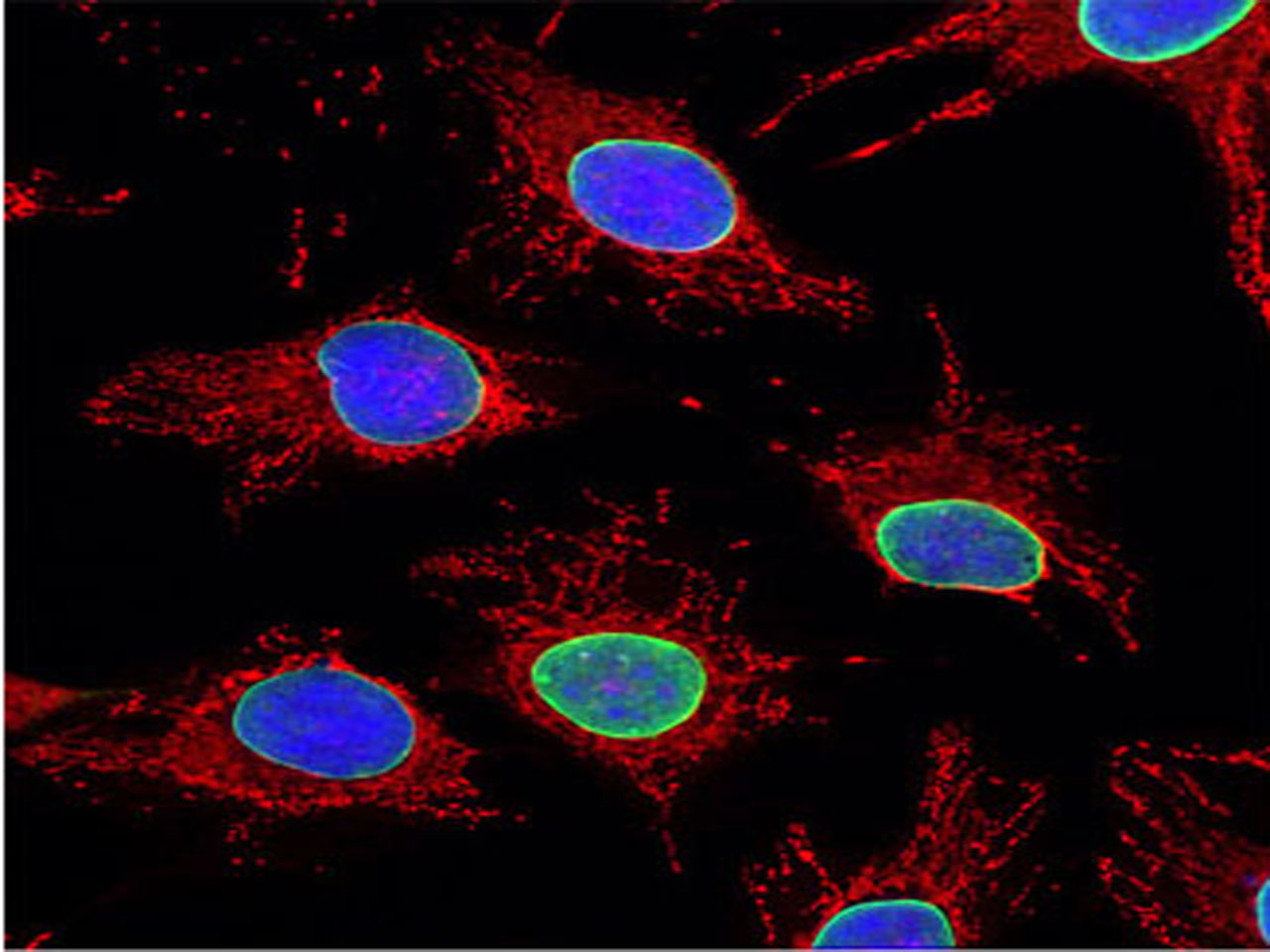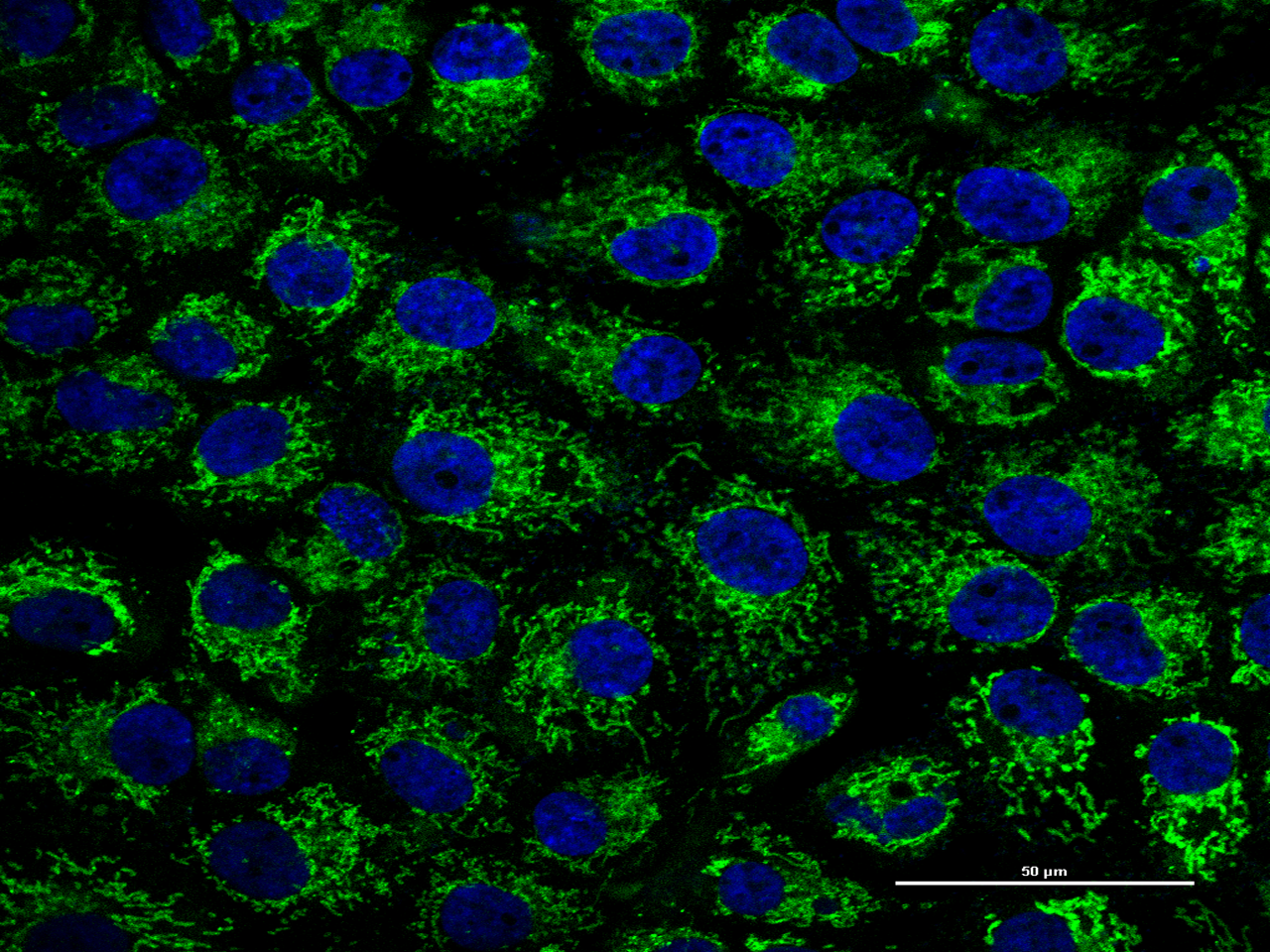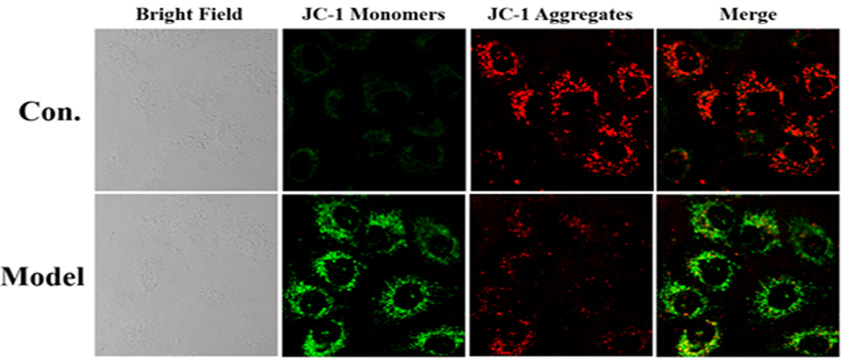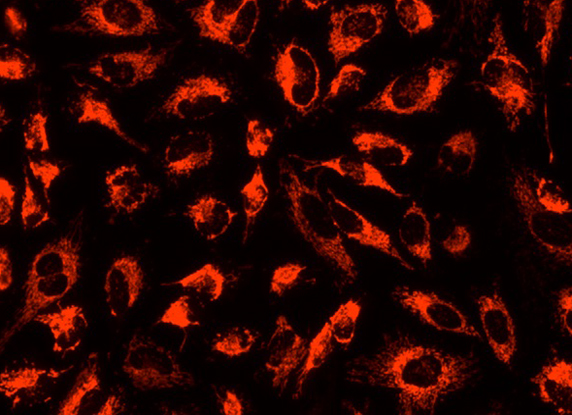Basic Information
Product name | Reactive Oxygen Species (ROS) Assay Kit |
Size | 1000T |
Storage | -20℃, protected from light |
Shipping | Shipped with ice pack |
Validity | 12 months |
ROS Excitation/Emission wavelength: 504/529 nm
Product Contents
| Component | Size |
| A. DCFH-DA(10 mM) | 0.1 mL |
| B. ROS Positive Control(Rosup 100 mM) | 1 mL |
Product Introduction
DCFH-DA (dichlorodihydrofluorescein-acetoacetate) itself has no fluorescence, but can freely penetrate the living cell membrane into the cell, and is hydrolyzed by the esterase in the cell to form DCFH. DCFH has no fluorescence and cannot penetrate the cell membrane, so it is oxidized by the active oxygen in the cell to generate fluorescent DCF. Based on the generation of fluorescence in living cells, the content and changes of cellular active oxygen can be determined. It can be directly observed using a flow cytometer or a fluorescence microscope, which is a classic method for detecting active oxygen in tissues or living cells. Rosup is a positive inducing drug for active oxygen, and the true level of active oxygen can be analyzed based on the intensity of its fluorescence signal.
Precautions
1. All fluorescent dyes have quenching problems. Please try to avoid light to slow down fluorescence quenching.
2. To avoid repeated freezing and thawing, this product can be divided into small quantities.
3. The positive control Rosup is generally used at a concentration of 100 μM (recommended concentration 100-400 μM, depending on the cell type). Usually, a significant increase in the level of reactive oxygen species can be observed 30 min-4 h after stimulation. The effect of the reactive oxygen species positive control may vary greatly for different cells. If no increase in reactive oxygen species is observed within 30 min after stimulation, the induction time can be extended or the concentration of the reactive oxygen species positive control can be appropriately increased. If the reactive oxygen species increase too quickly, the induction time can be shortened or the concentration of the reactive oxygen species positive control can be appropriately reduced.
4. During the experiment, if the fluorescence of the negative control cells without stimulation is also strong, DCFH-DA can be diluted 1:2000-1:5000 to make the final concentration of DCFH-DA 2-5 μM. The probe loading time can also be adjusted appropriately within 15-60 min according to the situation.
5. The reactive oxygen species positive control (Rosup) is only used as a positive control sample and does not need to be added to every sample.
6. After the probe is loaded, be sure to wash away the residual probe that has not entered the cell, otherwise it will lead to a high background.
Note: This reagent is for scientific research use only!




